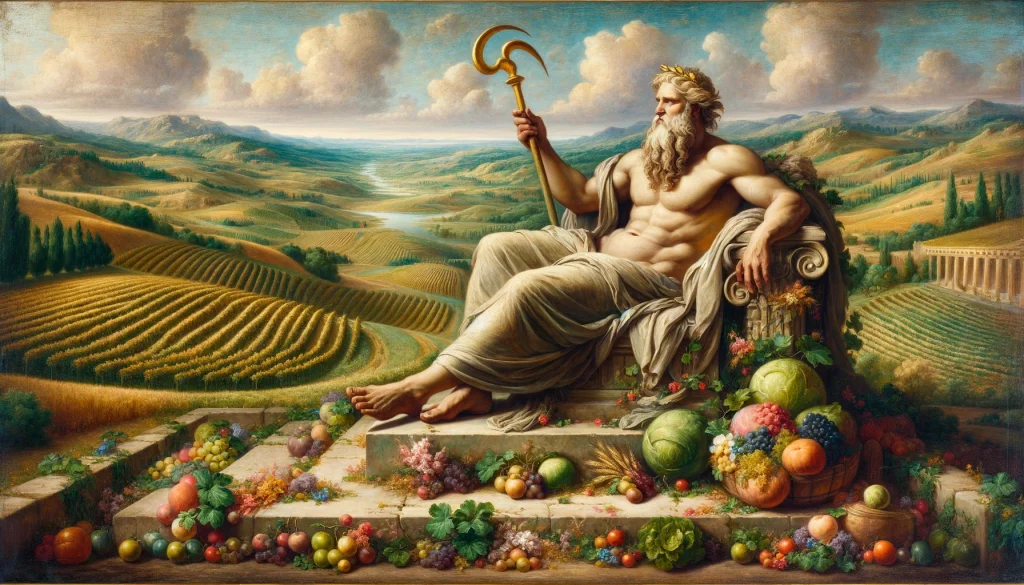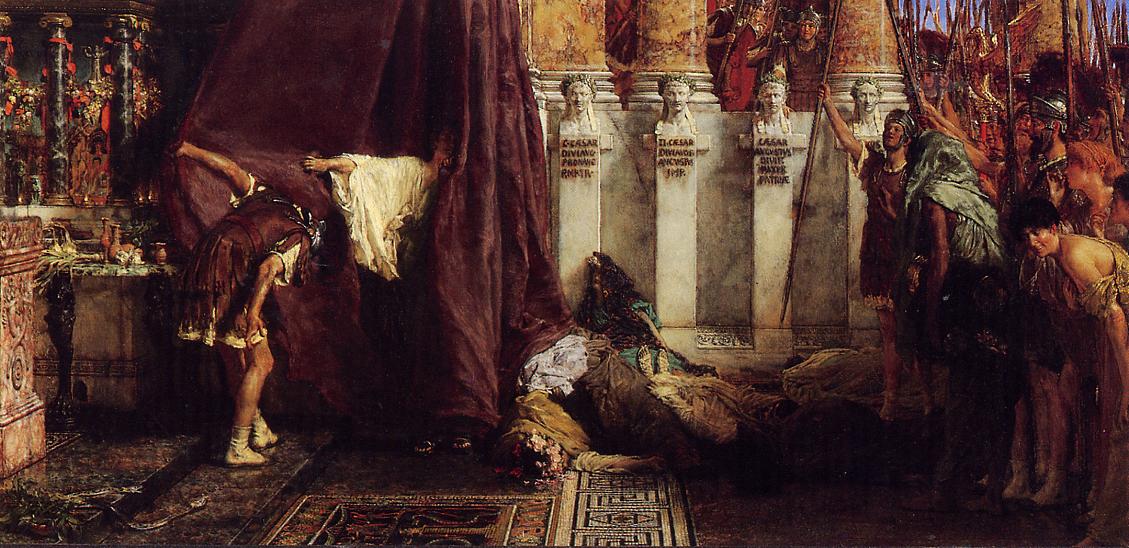Saturnalia was a revered ancient Roman festival dedicated to the deity Saturn, commencing on the 17th of December on the Julian calendar, with the revelry extending until the 19th of December. By the first century B.C., the festivity had been prolonged to last until the 23rd of December, spanning an entire week. Celebrations began with a ritual offering at Saturn’s Temple in the Roman Forum, followed by a communal feast, private exchanges of gifts, ceaseless celebration, and a reversal of societal roles that created a carnival-like setting. During this period, gambling was allowed and traditional social hierarchies were upended, symbolized by masters serving their slaves, reflecting a period of freedom for enslaved and free persons alike. A highlight of the festival was the selection of the “King of the Saturnalia,” who would issue whimsical commands that were joyfully obeyed, overseeing the festivities. Gifts were typically humorous or small statuettes of wax or pottery called sigillaria. The poet Catullus famously referred to it as “the best of days.”
Saturnalia mirrored the earlier Greek holiday Kronia, celebrated in the late summer during the Attic month of Hekatombaion. For some Romans, it held theological significance, harkening back to the mythical Golden Age under Saturn’s reign. The philosopher Porphyry saw the liberation characteristic of Saturnalia as an allegory for the eternal liberation of souls. The festival is thought to have shaped customs of later midwinter celebrations in Western Europe, particularly those related to Christmas, the Feast of the Holy Innocents, and Epiphany. The tradition of electing a “Lord of Misrule” in historical Western European Christmas celebrations likely originated from Saturnalia rituals.
Saturn in Roman Mythology

In the lore of Roman mythology, Saturn was venerated as a god of agriculture and was believed to have ruled during an era of prosperity and peace known as the Golden Age. This was a time when the earth freely offered its riches, allowing humans to live effortlessly in a pure state. Saturnalia’s festivities aimed to recreate the abundance and joy of this mythical bygone era. Its Greek counterpart, Kronia, was observed on the twelfth day of Hekatombaion, a month that spanned from about mid-July to mid-August on the Attic calendar.
Justinus, the ancient Roman historian, attributes the role of a historical king among the pre-Roman inhabitants of Italy to Saturn.
The first inhabitants of Italy were the Aborigines, whose king, Saturnus, is said to have been a man of such extraordinary justice, that no one was a slave in his reign, or had any private property, but all things were common to all, and undivided, as one estate for the use of every one; in memory of which way of life, it has been ordered that at the Saturnalia slaves should everywhere sit down with their masters at the entertainments, the rank of all being made equal.
Justinus, Epitome of Pompeius Trogus 43.3
Similar Festivals
The Greek author Athenaeus provides references to a variety of festivals with similar themes throughout the Greco-Roman sphere. These included the Cretan Hermaia in honour of Hermes, an unnamed Troezen celebration for Poseidon, the Thessalian Peloria for Zeus Pelorios, and an unidentified Babylonian festival. He also notes that the practice of masters sharing meals with slaves paralleled customs in the Athenian Anthesteria and the Spartan Hyacinthia. Additionally, the Argive festival Hybristica, although not a direct counterpart to Saturnalia, featured a reversal of traditional roles, with women donning men’s attire and men wearing women’s clothing.
Historical Accounts of Saturnalia
Though Saturnalia is one of the most well-documented Roman festivals, no single ancient text provides a comprehensive account of the celebration from start to finish. What is known today is reconstructed from fragments of descriptions that address different facets of the festival. The most extensive source on Saturnalia is the eponymous book by Macrobius, a late antique Latin author, who provides detailed insights into the festivities. According to Macrobius, Saturn’s era was marked by happiness, abundant prosperity, and a lack of social hierarchy, as evidenced by the complete freedom slaves enjoyed during the Saturnalia festivities. In Lucian’s depiction of Saturnalia, Chronos himself heralds a time of merriment where drunkenness is permitted and slaves may openly mock their masters.
Macrobius also interprets Saturnalia as a festival of light leading up to the winter solstice, with candles as a prominent symbol, representing the pursuit of wisdom and truth. The theme of light’s triumph was later celebrated in the Roman Empire with the Dies Natalis Solis Invicti, the “Birthday of the Unconquerable Sun,” on December 25th.
The observance of Saturnalia persisted into the 3rd and 4th centuries CE, and with the advent of Christian dominion in Rome, many of its traditions were adapted into, or at least influenced, the festive customs associated with Christmas and the New Year.
Features of Saturnalia
Role reversal
Saturnalia featured role reversals and a leniency in behaviour. Accounts vary regarding the dining arrangements, with some indicating that slaves joined their masters at the banquet, while others suggest that slaves were served first or even served their masters. The customs may have evolved over time.
During Saturnalia, slaves were granted the freedom to openly criticize their masters without fear of punishment. This period was marked by unrestrained speech, referred to by the poet Horace as “December liberty.” Horace depicted slaves offering sharp critiques to their masters in satires set during Saturnalia. Despite the temporary upheaval of social norms, it was understood that such changes were transient, and societal order would be restored after the holiday.
Participants in Saturnalia abandoned the traditional Roman toga in favor of more colorful Greek-style garments deemed inappropriate for daytime wear. Citizens typically went bare-headed, but during Saturnalia, they wore the pilleus, a conical felt cap associated with freedmen. Slaves, who were typically barred from wearing the pilleus, also donned it during the festivities, leading to a uniformity in headwear regardless of social status.
While sources imply the involvement of freeborn Roman women in Saturnalia, their attendance at banquets likely varied according to contemporary customs. From the late Republic onwards, women mingled more freely with men compared to earlier periods. Female entertainers may have been present at some all-male gatherings, and there are indications of role-playing and possibly mask-wearing during Saturnalia.
Although no specific theatrical events are mentioned, some scholars, like Erich Segal, interpret Roman comedy as reflecting the spirit of Saturnalia, with its themes of impudence and freedom.
Gambling
During Saturnalia, activities such as gambling and dice-playing, typically discouraged, were openly allowed, even among slaves. Stakes for these games included coins and nuts. Illustrated on the Calendar of Philocalus, Saturnalia is depicted by a figure wearing a fur-trimmed coat seated beside a table with dice, accompanied by the caption: “Now you, slave, have the freedom to play games with your master.” Excessive eating and drinking became commonplace, with sobriety being the exception rather than the norm.
Seneca expressed anticipation for the holiday, albeit with some reservation, in a letter to a friend.
It is now the month of December, when the greatest part of the city is in a bustle. Loose reins are given to public dissipation; everywhere you may hear the sound of great preparations, as if there were some real difference between the days devoted to Saturn and those for transacting business. … Were you here, I would willingly confer with you as to the plan of our conduct; whether we should eve in our usual way, or, to avoid singularity, both take a better supper and throw off the toga.
Seneca the Younger, Epistulae 18.1–2.
Certain Romans found the festivities of Saturnalia overwhelming. Pliny, for instance, detailed a secluded set of rooms within his Laurentine villa, which he designated as a retreat:
…especially during the Saturnalia when the rest of the house is noisy with the licence of the holiday and festive cries. This way I don’t hamper the games of my people and they don’t hinder my work or studies.
Pliny the Younger, Letters 2.17.24.
Gift-giving
On December 19th, known as Sigillaria, gift-giving was customary. To maintain the egalitarian spirit of the season, presents were typically modest, such as pottery or wax figurines called sigillaria, candles, or humorous “gag gifts,” a preference notably favored by Augustus. Children were delighted with toys. Martial, in his numerous poems about Saturnalia, listed a wide range of gifts, from inexpensive writing tablets and dice to more extravagant items like statues or even exotic animals. Despite the potential for lavishness, Martial suggested that the value of a gift inversely reflected the depth of friendship. Wealthier individuals might provide gratuities to less fortunate acquaintances to aid in their gift purchases. Some emperors were renowned for their enthusiastic embrace of Sigillaria traditions.
Similar to modern greeting cards, verses sometimes accompanied the gifts, as seen in Martial’s collection of poems meant for this purpose. Catullus humorously received a book of terrible poetry from a friend as a jest.
Gift-giving extended beyond Sigillaria. In certain households, guests and family members received gifts following feasts where even slaves participated.
King of the Saturnalia
Imperial accounts mention a Saturnalicius princeps, known as the “Ruler of the Saturnalia,” who presided over the festivities as the master of ceremonies. Selected by lot, this figure has been likened to the medieval Lord of Misrule at the Feast of Fools. His whimsical commands, such as “Sing naked!” or “Throw him into cold water!” had to be obeyed by the other guests at the convivium, creating a chaotic and absurd atmosphere. Notably, the future emperor Nero is recorded as having played this role in his youth.
The absence of this figure in Republican period accounts suggests that the princeps of the Saturnalia may have emerged as a satirical response to the new era of rule by a princeps. This title was assumed by the first emperor Augustus to distance himself from the despised connotations of the word “king” (rex). While art and literature during Augustus’ reign celebrated his rule as a new Golden Age, the Saturnalia mockingly portrays a world where law is dictated by one individual, and traditional social and political structures are overshadowed by the emperor’s authority over his subjects. In a poem depicting an extravagant Saturnalia during the reign of Domitian, Statius emphasizes that even during the temporary return of Saturn, the emperor, akin to Jupiter, remains in power.
Io Saturnalia
Io Saturnalia” served as the quintessential shout or greeting of the festival, traditionally uttered following the communal feast on December 17th. The interjection “io” (from the Greek “ἰώ, ǐō”) could be pronounced with two syllables (a short “i” and a long “o”) or as a single syllable, where the “i” takes on the form of the Latin consonant “j” and is pronounced “yō.” This expression carried profound emotional weight, serving as both a ritualistic exclamation and an invocation. While it was commonly used to announce triumph or celebrate Bacchus, “Io Saturnalia” also punctuated jokes and light-hearted moments throughout the festivities.
